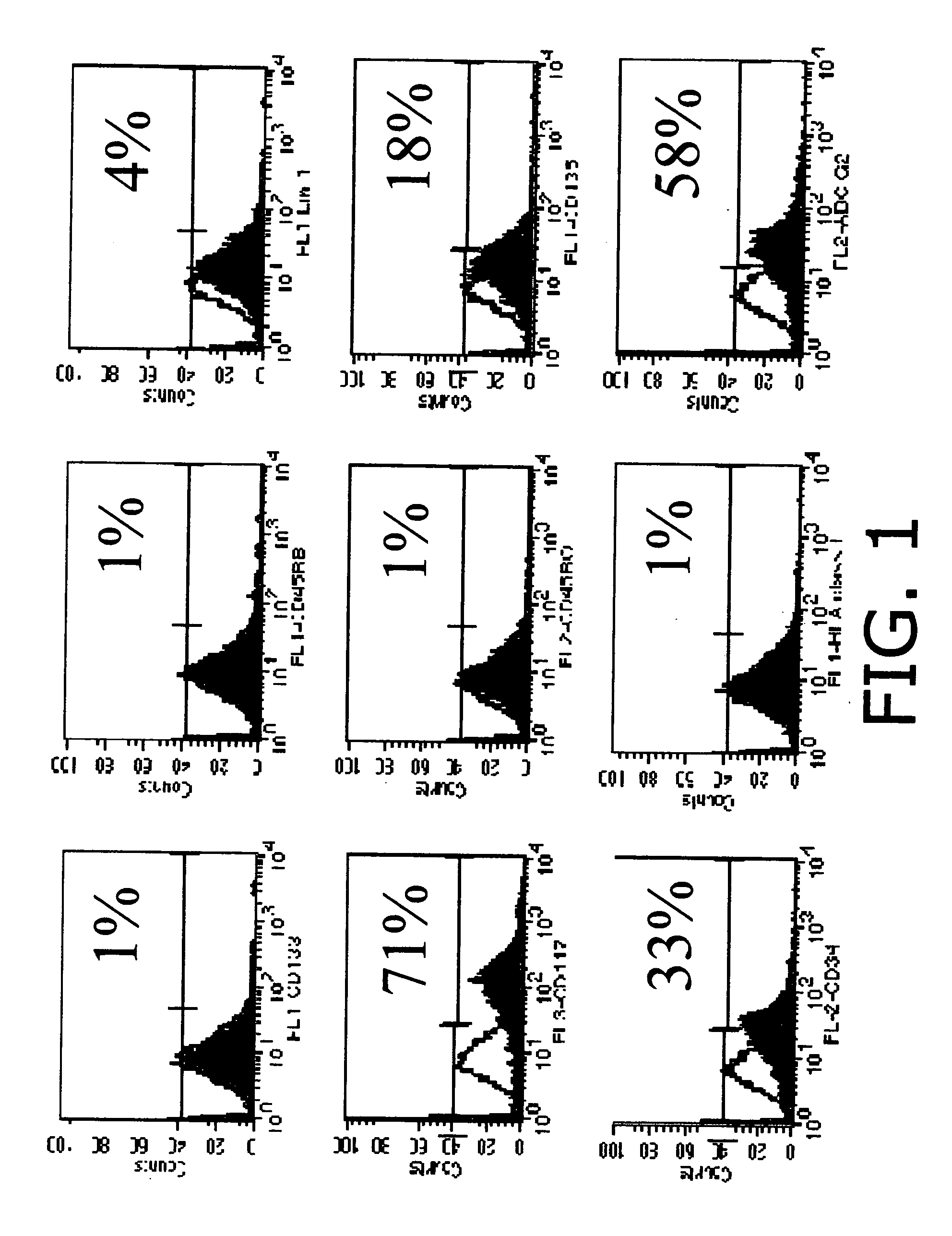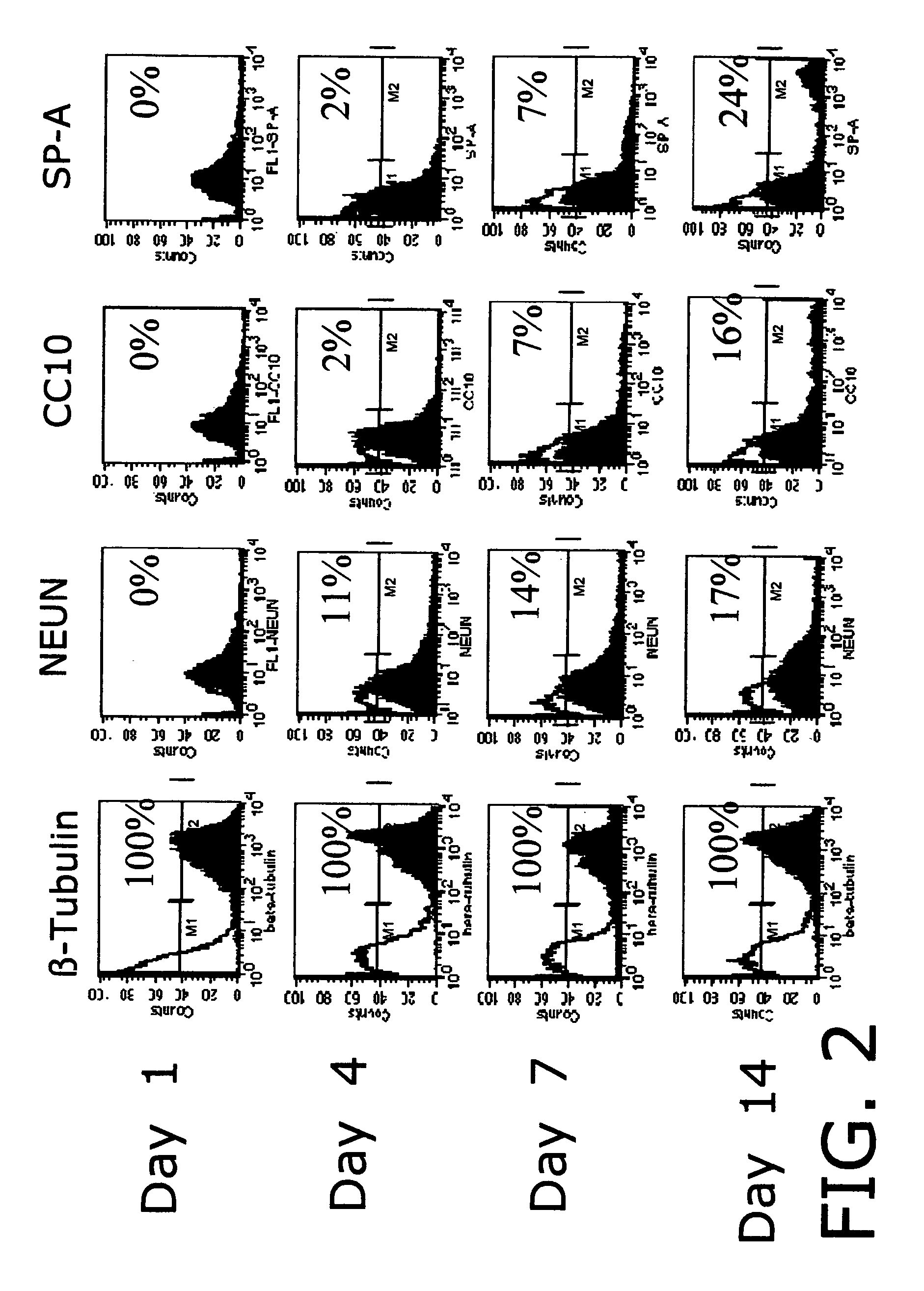Ex vivo human lung/immune system model using tissue engineering for studying microbial pathogens with lung tropism
a lung tropism and lung technology, applied in the field of ex vivo or engineered tissue systems, can solve the problems of difficult use of animal models in human disease study, hypoxemia and death, and plasma leakage from the capillary
- Summary
- Abstract
- Description
- Claims
- Application Information
AI Technical Summary
Benefits of technology
Problems solved by technology
Method used
Image
Examples
Embodiment Construction
[0096]The inventors have demonstrated the development of engineered tissues (TE) including in vitro bone marrow, trachea and lung from mammalian (human, murine, ovine) adult stem cells. In an attempt to better understand the events in normal lung tissue regeneration, we have focused on isolation, characterization and differentiation of cells obtained from adult lung tissue. We have documents the existence in adult lung tissue of a population of pluripotent or multipotent progenitor cells, which are capable of generating complex engineered lung tissue when combined with a synthetic scaffold. Here, we emphasize the potential of scaffold-based tissue engineering approaches in combination with the use of progenitor or stem cells to generate new lung tissue in an in vitro system. In a variety of other tissue engineering applications, tissue assembly by cells has been facilitated by the use of polymer scaffolds which act as templates for cell-cell organization.
[0097]We isolated a somatic ...
PUM
 Login to View More
Login to View More Abstract
Description
Claims
Application Information
 Login to View More
Login to View More - R&D
- Intellectual Property
- Life Sciences
- Materials
- Tech Scout
- Unparalleled Data Quality
- Higher Quality Content
- 60% Fewer Hallucinations
Browse by: Latest US Patents, China's latest patents, Technical Efficacy Thesaurus, Application Domain, Technology Topic, Popular Technical Reports.
© 2025 PatSnap. All rights reserved.Legal|Privacy policy|Modern Slavery Act Transparency Statement|Sitemap|About US| Contact US: help@patsnap.com



